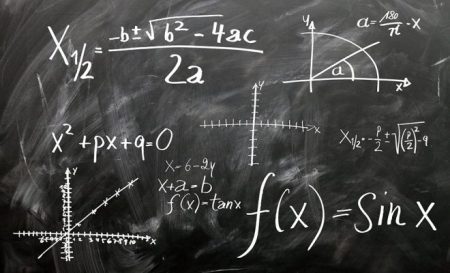Steroids, Launch Angles and Spin Rates—Not My Grandfather’s Baseball
 After more than a century, is the game played on baseball fields around the country still the same game as it was played 50 or 100 years ago? I’m afraid to say that what I see these days is not my grandfather’s baseball game.
After more than a century, is the game played on baseball fields around the country still the same game as it was played 50 or 100 years ago? I’m afraid to say that what I see these days is not my grandfather’s baseball game.
I see a few super-teams sending out flamethrowers with an assortment of nasty breaking pitches to thwart the muscled monsters awaiting at home plate for a mistake. All of them ready to bash the tightly wound orb into orbit so it never reenters the atmosphere. In effect, setting one dubious record after another. Home runs. Strikeouts. And bases on balls.
Where have you gone Nellie Fox, Phil Rizzuto, Lou Boudreau, Leo Durocher, Eddie Stanky, Jackie Robinson and so many others?
In Roger Angell’s Words
The legendary baseball writer for The New Yorker, Roger Angell wrote: Within the ballpark, time moves differently, marked by no clock except the events of the game. This is the unique, unchangeable feature of baseball and perhaps explains why this sport, for all the enormous changes it has undergone in the past decade or two, remains somehow rustic, nonviolent and introspective. Baseball’s time is seamless and invisible, a bubble within which players move at exactly the same pace and rhythms as all their predecessors.
Yes, that’s the way it looks. Same field. Same nine players. The same number of outs. Innings. But the game has changed.
Angell is right, but he’s also wrong. Players no longer move at exactly the same pace and rhythms as all their predecessors.
Their dance card has filled with new ritual expressions. A dip here. A bend of the wrist there. Fingertips extended farther around the ball. More of a crouch. All of it the result of analytical output from new digital motion capture kinetic machines unheard of 20 years ago.
So, the digitally inspired curveballs or changeups thrown by pitchers today break and slide and drop differently than those tossed by Sandy Koufax, Warren Spahn, Babe Ruth and Candy Cummings (the first pitcher to throw a curveball in the 1870s). A lot of the breaking pitches today are designer variations tailored to each athlete’s ability.
That’s because baseball is no longer “one size fits all.” There are now a lot of sizes in baseball. No need to jam a round peg into a square hole. Find the one that fits best.
Or, for a while, see if steroids work?
Steroids Played Center Stage, Briefly
Hitters started to pound baseballs out of stadiums by the late 1980s. Mark McGwire and Jose Canseco were known as the Bash Brothers in Oakland (a takeoff on the popular Blues Brothers movie from 1980 with John Belushi and Dan Ackroyd). George Bell and Jesse Barfield terrorized pitchers in Toronto. Barry Bonds and Bobby Bonilla made Pittsburgh relevant again after years of dwelling in the dungeon of the National League. Of course, there were many other sluggers, as well.
Over time, it became clear steroids were the reason Sammy Sosa and Rafael Palmeiro,among others, were belting baseballs out of stadiums by the untold dozens. It was still the same game, but something had changed. Being a mere mortal was no longer enough.
By the 1990s writers and other outsiders had begun to notice pimples cropping up over many players’ bodies when those princes strolled through clubhouses around baseball. Naked. Bodies that were once of the mere mortal variety had begun to remind us of bodybuilders like Arnold Schwarzenegger.
Anabolic steroids, or recreational steroids, began to be whispered in some baseball reporting.
They enhanced physical performance by promoting the growth of muscle. Suddenly, just being good inside the timeless game was not enough. Players felt they needed an edge. Why they needed this edge was anyone’s guess?
More money? Stature? Celebrity status? Whatever their reasons, they were outside baseball’s rules.
The biggest offenders were baseball’s greatest gods: Barry Bonds, Roger Clemens, Manny Ramirez and Alex Rodriguez. No reason to open the Hall of Fame to players who reached outside the foul lines for supernatural alchemies.
Baseball itself adopted a very belated and hypocritical stance on steroids because ownership made such huge profits on the more factor steroids brought to the game.
The McGwire/Sosa home run chase of 1998 brought a lot more oomph, fanfare, publicity and money to the game that summer.
Add it up. Increased popularity, fans flocking to the ballpark to see blasts of prodigious fury rocket out of the ballpark. More and more fans filled the seats spending their hard-earned cash on beers and sodas and hot dogs not to mention MLB merchandise that sold at outlandish prices.
Toss in new television revenues for most teams. Some teams, like the New York Yankees, created their own regional sports cable network that soon enough would be worth billions by itself. Forget the multimillion-dollar revenues.
The Yankees Entertainment and Sports Network, or YES, began in 2002. And many other teams were off to the races, as well.
So, why rock the boat until fans realized that the product on the field had been cheapened? Little was said about Barry Bonds’ achievements on the field, even though they screamed steroid use. Seventy-three home runs. An almost .500 OBP. Those were unusual numbers.
Not sooner, but later, baseball began to act. Commissioner Bud Selig, who claimed he knew nothing (incredible as that falsehood sounds), had to think of something to do. Perhaps if MLB managed not to choose so many dummies as commissioners during trying times, MLB would not have had their head in the sand so often. But when Selig removed his head, he did not like what he saw.
Remember, Marvin Miller took Commissioner Bowie Kuhn to the cleaners in the early 1970s and set the stage for free agency in the process.
Bud Selig asked Jayson Stark of ESPN years later in 2016: Now, let me ask you a question. And I’m being serious. If you had been me then, what would you have done [about steroids]?
Selig added that, Maybe I should have said more. Otherwise, Selig had no idea how to act, other than to ask a lot of questions and listen to one excuse after another for doing nothing when the cash register was not pinging away.
Next!
Are steroids effectively out of baseball? Apparently so, but not yet.
Frankie Montas, a starting pitcher for the Oakland A’s was suspended 80 games for violating Major League Baseball’s PED policy when he tested positive for a performance-enhancing drug this past week. So, there are those still tempting fate.
And then there is the fool of fools, Jenrry Mejia, one of the only players to have been assessed an MLB lifetime ban for PED abuse, only to see his ban rescinded for some reason. Mejia is now with the Boston Red Sox, though he last pitched in a major league game in 2015 with the Mets. Currently, with Pawtucket, he has undistinguished himself in 30.2 innings of relief.
Mejia was supposed to have proven that alchemy has dissolved into digital transformation. But Robinson Cano last season, and Frankie Montas last week, prove that not all baseball players can think. Perhaps it’s only time before the Mets acquire Montas? Proving not all ownership groups can think clearly, either.
Most other players, the ones who seem to be able to think, now adhere to the digital routines being offered by their baseball clubs. These team-sanctioned routines are financed by the team, the support personnel are employees of the team, and MLB has yet to object to baseball players improving themselves in this manner.
This manner means players whose every pitch and batting swing are recorded and evaluated on complex digital computers originally designed for scientific tasks.
These devices were not designed as a visual system of precision cues used to fine-tune hand movements or bodily positions adopted by baseball players. Yet that is how many of these machines are being sold today. And it’s perfectly acceptable to MLB.
So, if Frankie Montas had perfected his curveball or two-seam fastball on an Edgertronic SC1, Trackmans, or Rapsodos machine, MLB would not have suspended him for 80 games.
These high-tech digital machines are being deployed by teams to help their players become spin rate velocity freaks who design their own pitches (like Justin Verlander and Gerrit Cole in Houston) or swing monsters who deploy their own launch angles for maximum exit velocities and moon shot home runs (that Chris Bryant of the Cubs has worked on).
For a fascinating discussion of new technology in baseball and the way its top teams and players are employing the technology, read Tom Verducci’s discussion about baseball’s digital frontierland in the Baseball Issue of Sports Illustrated.
Tom Verducci is decidedly not writing about my grandfather’s baseball.
Grandfather never heard of Edgertronic SC1s, Trackmans, Rapsodos, Ribee Virtual Reality systems for the visualization of pitching patterns, or KinaTrax markerless motion capture systems. There are other digital products as well, but the effect of all this is that players no longer try to remember how a pitcher attacked them last game. Now they can put on a VR headset and watch how that pitcher attacked them whenever they please. Day of the game. Whenever. Or a pitcher can study his every pitch in a bullpen session and design a new breaking pitch. Or two-seam fastball. For his next start. Or that pesky hitter.
Nope. Grandfather did not see this kind of game played or designer pitches thrown at The Polo Grounds. Or Griffiths Stadium. Or Shibe Park.
Nor would he understand what exit-velocity is about. Or vertical break. Horizontal break. Spin rate. Spin axis. And pitch path.
But that’s the new game today. And MLB is okay with it.

























